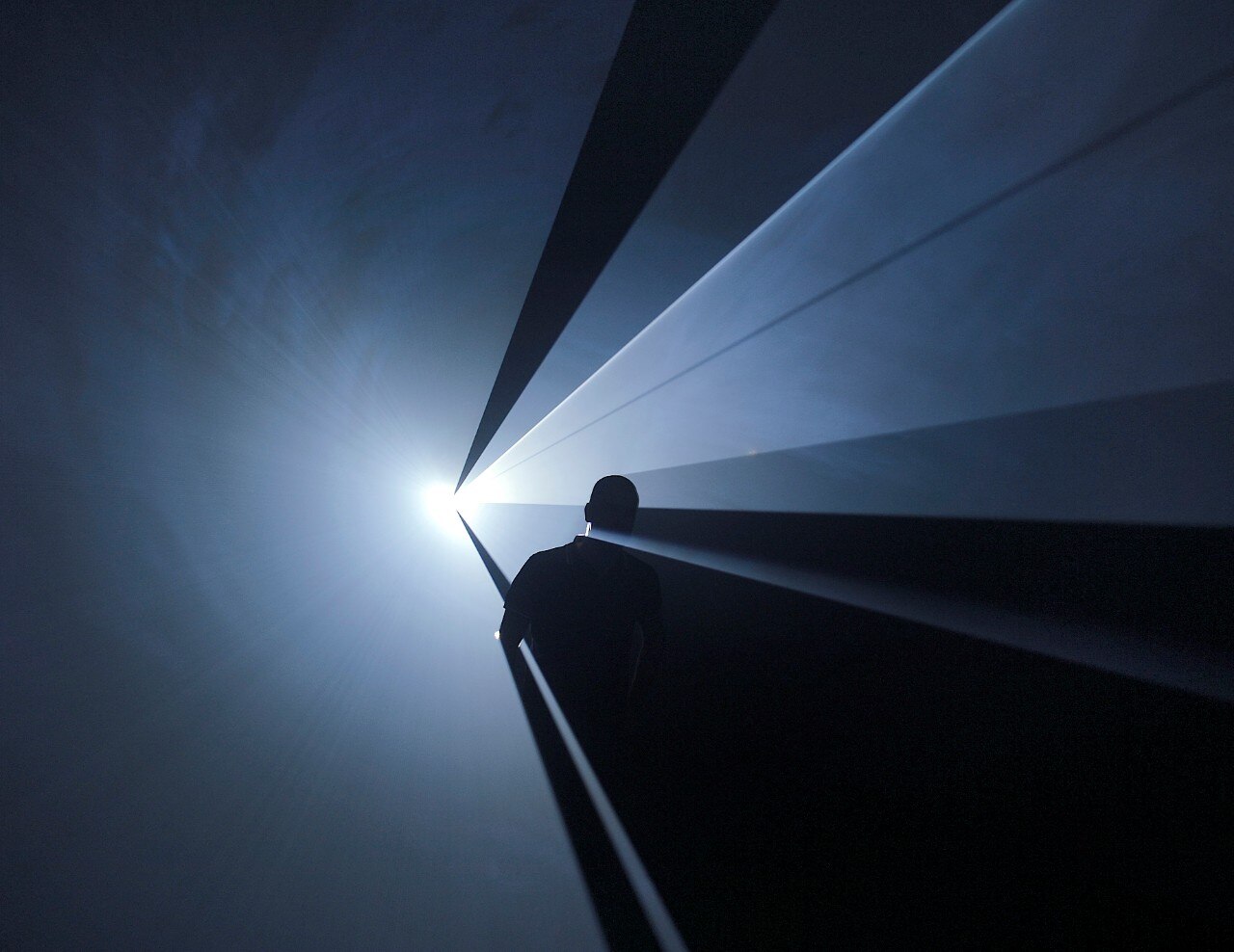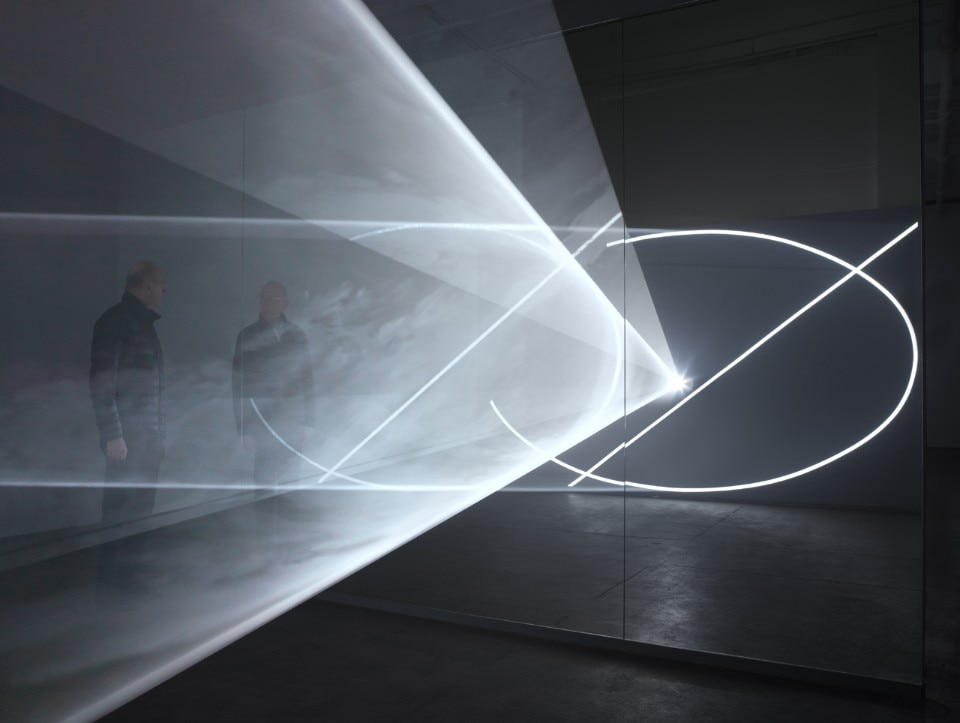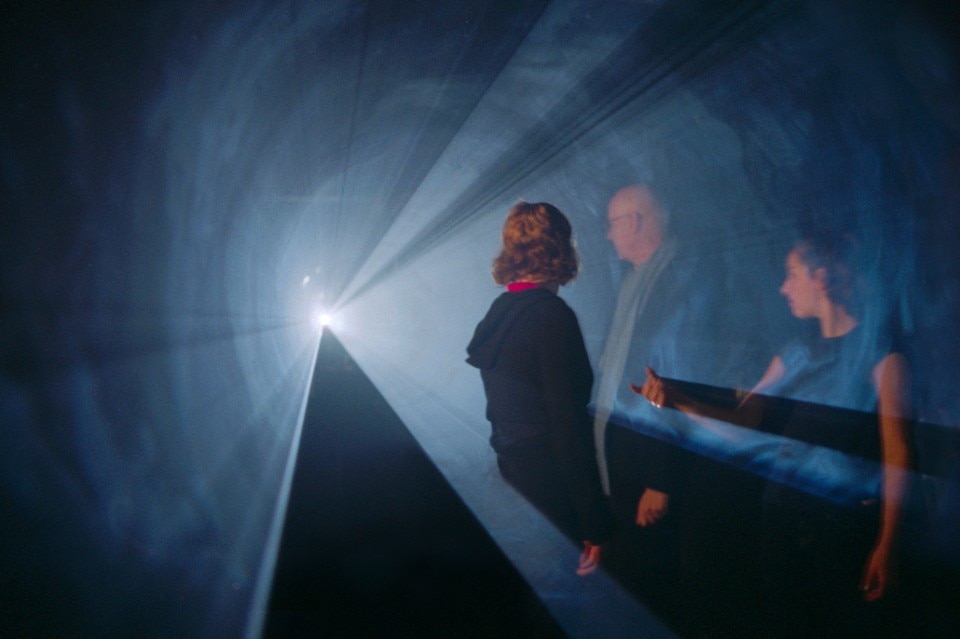This article was originally published on Domus 1083, October 2023.
Your work is both spatial and architectural, creating space from light and animated by the movement of people experiencing it. In this way it is cinematic. How do you frame your projects and define the field or scale? What happens when this frame expands, for instance through reflection?
My first film Landscape for Fire (1972) was a film documenting a live performance. But when I began working on what became my first “solid-light” work, Line Describing a Cone (1973), I was following a train of thought that was entirely cinematic: specifically, to make a film that was in itself a performance. It proposed to its audience that they begin by turning their back on the screen and instead to face the projector. As I put it then, “The film began as a coherent pencil of light, like a laser beam, and developed through 30 minutes into a complete hollow cone…” Unlike Landscape for Fire, this film existed only in the present, the moment of projection. And looking began to resemble sculptural looking – in motion in three-dimensional space. There was also some reminder of human performance, in that the viewers were themselves objects on view. Over the next couple of years, I made six additional works that further explored these ideas: Conical Solid (1974), Cone of Variable Volume (1974), Partial Cone (1974), Long Film for Four Projectors (1974), Four Projected Movements (1975) and Long Film for Ambient Light (1975). Initially it was trial and error that guided me towards the most productive working size. The height of a human body and the dimensions of a typical empty gallery or avant-garde film space exerted their influence too.
Eventually I settled on a projection throw of about ten metres long with a four-metre-wide footprint, with the outstretched limbs of our Vitruvian man inscribed somewhere near the centre of the cone. There are about 45 solid-light works to date. One of the most recent, Split Second (Mirror), 2018, introduces a wall-sized mirror as its screen surface. The mirror cuts the throw of the projector in half, to just five metres. Instead of striking the screen surface to create a single ten-metre-long conical form inside the rectangular exhibition space, the mirror redirects the beam backwards, returning it to the surface of the wall that hides the projector. This sounds simple enough, but the effect is to produce two identical conical forms, each apparently ten metres long, facing opposite directions, one inside the other. The complexity is increased by the drift of visitors, puzzled by the undeniable fact that it is barely possible to say for certain which forms are produced by direct projection and which forms are virtual replicas.
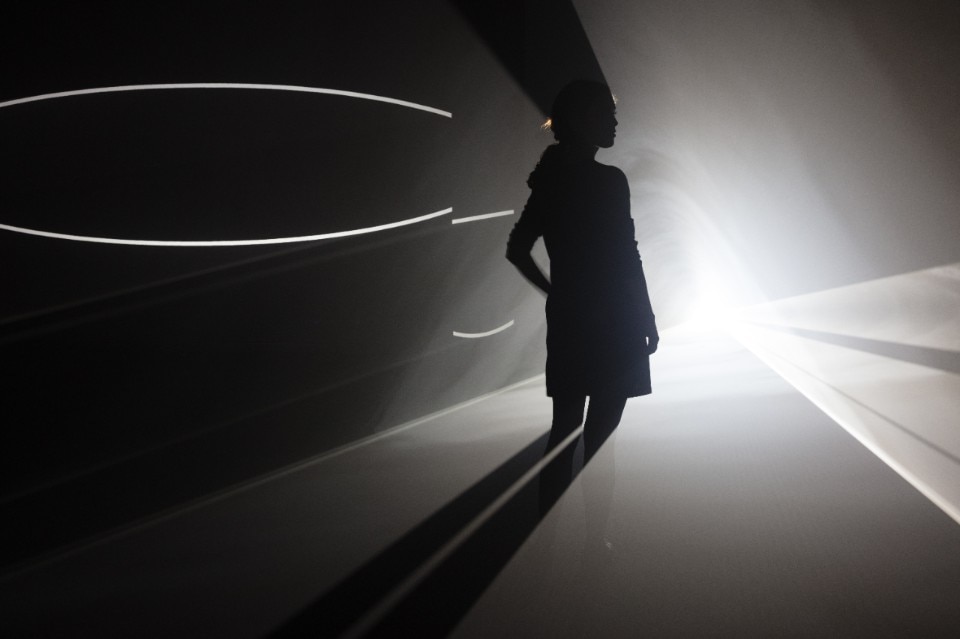
You borrow techniques of transition from cinema and elongate their timeframes in your work. These transformations help to transcend visuality into a visceral experience. Can you describe how this works and its effect?
Since 2005 I have complicated this solid-light format by adopting a cinematic transition called the “wipe”, a now archaic transition that dates back to early cinema, when a simple cut from one shot to another was considered too confusing. The wipe, lasting a mere half-second, signalled a change of time or place by actually showing the incoming filmic scene covering over (wiping) the outgoing scene. The duration of one of my own wipes would be closer to 8 minutes, so that a full repeating cycle (shot A to shot B and vice versa) would be 16 minutes.
My wipe would represent not the traditional momentary transition but the entire durational shape of that particular work. There are in fact four forms of motion in play: each of the two components of the wipe are in their own independent transitions; there is the speed of the sideways motion of the wipe itself; then there is the indeterminate motion of the viewer. The swift movement of a large volumetric form in space tends to encourage the viewer to stay rooted to the spot, and simply “watch”. The different forms of motion within my wipe need therefore to be extremely slow, so slow that the object in space appears to barely be moving. Under this condition, the viewer will sense the object as a sculptural form, and comes to understand their exploratory motion, plus the motion of the volumetric forms, to be in a slow-motion interaction with one another. What seems to be in play is an irregular geometric form within a continuous present tense that can barely be described, let alone remembered.
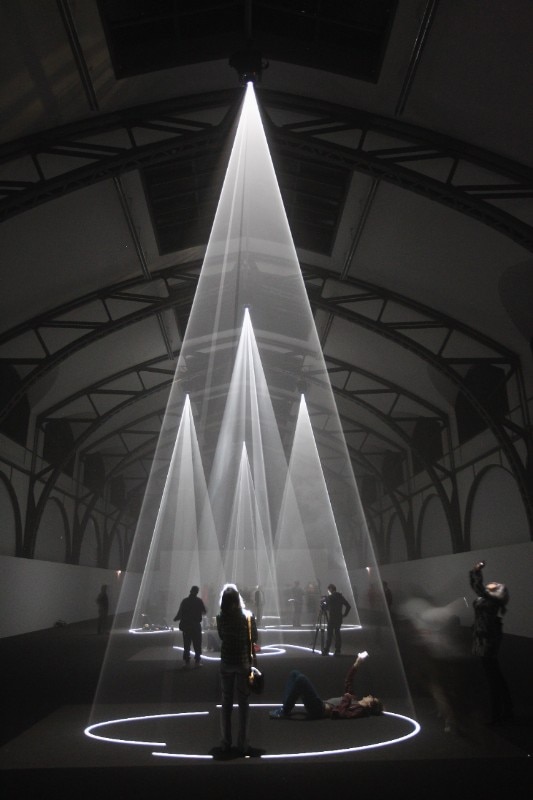
“Solid light” could describe a consistent theme since your early work: light is mostly perceived as an ambient, omnipresent phenomenon. Could you explain the role of dust, smoke or haze to achieve this solidity? Are there differences in the quality or textures of light that are expressed in each piece?
My earliest pieces from the 1970s were legible as three-dimensional forms thanks to the dust rising from the wooden floors of the old industrial lofts where the works were originally made, together with the then ubiquitous cigarette smoke. Later, smoking was prohibited in public spaces, and exhibition flooring in new galleries and museums was routinely made of polished wood or poured concrete, both circumstances fatally weakening the legibility of my three-dimensional volumes. The appearance in the 1990s of the haze machine, which created a reliable and safe ambient mist, was hugely important in creating a stable environment for the new work, which I initiated around 2001. The haze machine produced drifting, marbled surfaces that also enhanced the three-dimensionality of the slowly developing membranes in space.
With the medium of film, 24 frames are sufficient to create for our eyes the illusion of continuous movement, thanks to “persistence of vision” (where the retina of our eyes retains an image for a brief period after the actual image has vanished from view). In the 1970s series, I discovered that it was possible to exploit this principle to create textural effects in the surface of a membrane of light by systematically removing (or adding) a number of frames. The work that I composed with this structural idea was my 1974 Long Film for Four Projectors, a continuous installation with a five-hour repeating cycle. In that work I used 4 different light textures: solid (24 frames of image repeated continuously); glimmering (1 frame blacked out alternating with 8 frames of image); flickering (1 frame blacked out alternating with 1 frame of image); and blinking (8 frames blacked out alternating with 1 frame of image). It was just a question of arithmetic.


